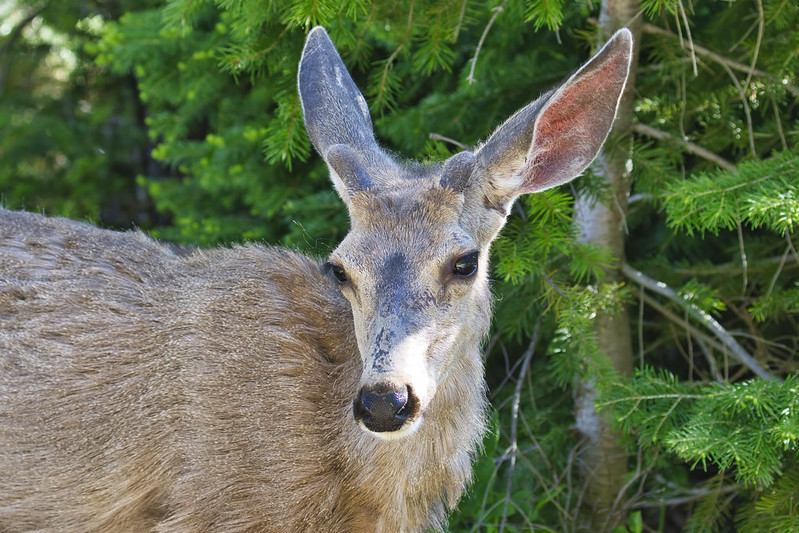In June 2017, I had the opportunity to visit the Grand Teton National Park, a breathtaking destination that offers countless opportunities for wildlife photography. While I was taking photos near Phelps Lake, close to the Laurance S. Rockefeller Preserve, a young boy got my attention and pointed out a Mule Deer Buck that was approaching me. I slowly turned my camera and captured a few stunning shots of this magnificent animal before it moved on towards the lake.

What caught my attention was the fact that the Mule Deer Buck was not alone – it was accompanied by another deer, which I believe was a female. Both of them grazed towards the lake and then disappeared into the thick timber as they climbed up a hill. However, what stood out in the photos I captured was the new antlers that the Buck was growing for the season.
Mule Deer are known for their impressive antlers, which are unique to each animal and play a crucial role in their survival. Antlers are a key attribute that set apart male Mule Deer, also known as Bucks, from females, known as Does. Every year, Mule Deer Bucks shed their antlers and then start growing a new set.
The process of growing antlers is an incredible phenomenon that can take anywhere between three to four months. Initially, Bucks grow a layer of skin called velvet around their antlers. This velvet supplies the growing antlers with blood, which helps them grow rapidly. As the antlers reach their maximum size, the velvet dries up and falls off, leaving behind the mature antlers. The antlers serve several purposes, including protection, dominance, and attracting potential mates during the breeding season.
In conclusion, my encounter with the Mule Deer Buck was a remarkable experience that allowed me to capture some stunning photographs of this majestic animal. Seeing the antlers in the process of growth only added to the excitement and provided a fascinating insight into the world of these incredible creatures. If you’re a wildlife photography enthusiast, a visit to the Grand Teton National Park should definitely be on your bucket list.
I was hand-holding a Canon EOS 7D Mark II camera with a Canon EF 100-400 mm f/4.5-5.6L IS II lens attached.
• Location: Wyoming
• Date Taken: June 5, 2017
• Aperture: f6.3
• Shutter speed: 1/200 sec.
• ISO: 1000
• Exposure Mode: Aperture Priority
• Focal Length: 135 mm

